I recently had the most educational and entertaining visit to Frank Milwee Antiques, one the hidden treasures of Georgetown. Mr. Milwee sells 17th-21st century silver, as well an astounding collection of vintage corkscrews and wine paraphernalia. When I worked at the White House and we needed place card holders, Frank Milwee Antiques produced them (see photo below), and I’ve been a fan for many years.
People are sometimes reluctant to use or buy silver because they don’t want to clean it, or they’re afraid to use “the good silver.” Mr. Milwee makes the excellent case that silver was meant to be used every day, not only because it is durable and a pleasure to the eye, but because it’s actually quite easy to maintain.
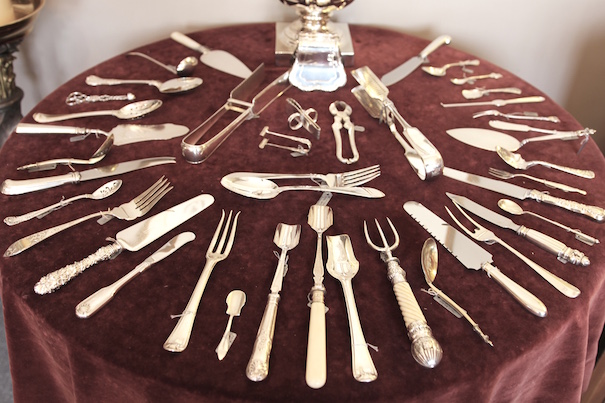
Unusual pieces of silver at Milwee Silver in Georgetown
Some tips from the expert:
His experience is that silver dips can be very useful, and are sensible for keeping flat silver free of food stains. He does a very quick once-over with the liquid and washes it off thoroughly under running water. Then, when the shine needs a little touching-up, he employs Goddard’s Long Shine Silver Foam as a dishwashing detergent on a sponge, followed by a good rinse under warm running water. After drying well, to bring out the best shine, he buffs the silver with a fresh soft microfiber cloth (similar to what you might use to wash a car.) He also uses fresh microfiber cloths for regularly dusting his silver – this removes the light, superficial tarnish that, if left in place, will soon adhere and eventually make the surface dull and dirty looking.
He sees very little difference between keeping up silver and maintaining display crystal: both benefit from a regular bath! And, yes, his family routinely washes their antique flat silver in the dishwasher, and chances are so can you. Knives go in blades down; spoons and forks intermixed, with bowls and tines up. Minimal detergent is used. To eliminate dishwasher spotting, skip the heated drying cycle, hand dry, and buff briskly to shine. Pre-stainless steel knives and any pieces with parts not made of silver should be hand washed under warm running water — never soaked.
Viewing old table silver is like gazing into the past; it provides an intimate view of how people lived, what kind of food they ate, and how elaborate their meals were. Here are a few photos of some of the more unusual pieces I saw, and, surprisingly, many of these pieces are as useful and relevant today as they were a hundred years ago. Though occasionally he has to guess at the purpose of some of the pieces he sells, Mr. Milwee points out that it’s not important how they were used before – he only cares about how they can be used today. And after seeing the Victorian ice cream spoons, I have to agree; they’re far more functional for eating ice cream than a basic spoon!
A game fork with a handle in the shape of a deer’s hoof
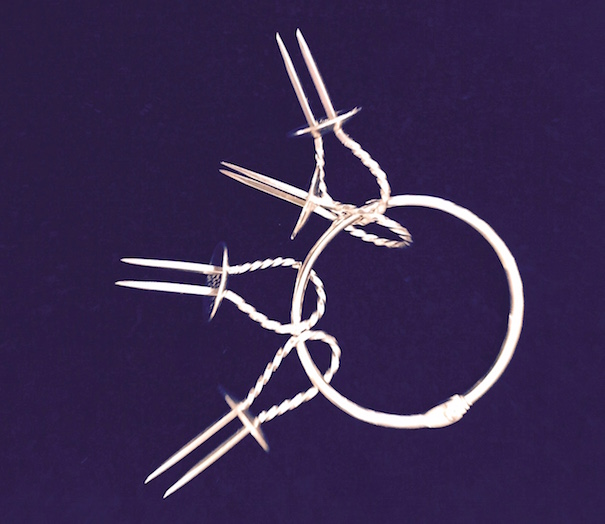
Corn on the cob holders
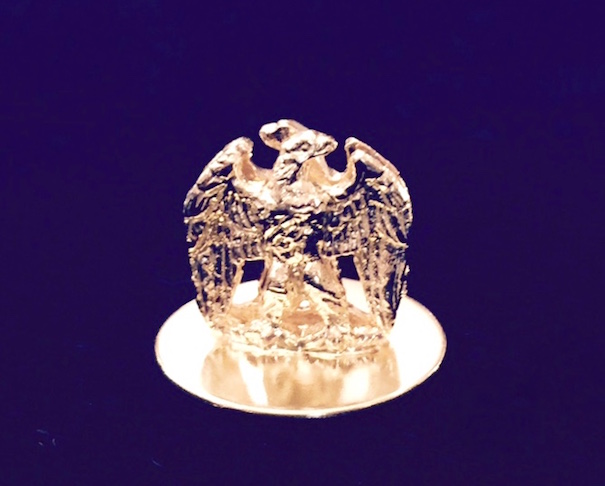
The White House placecard holders
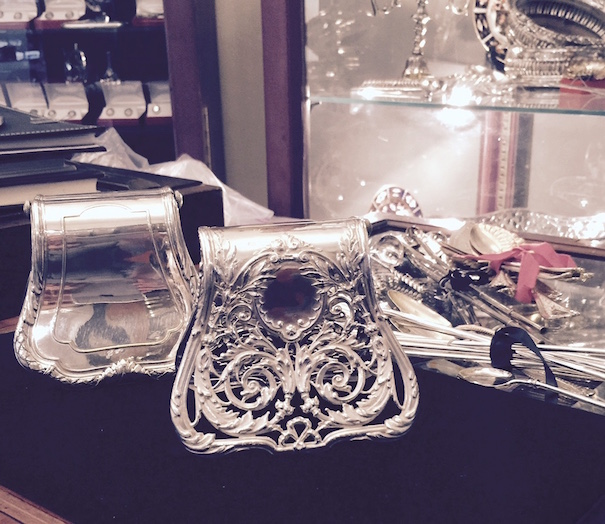
Asparagus servers
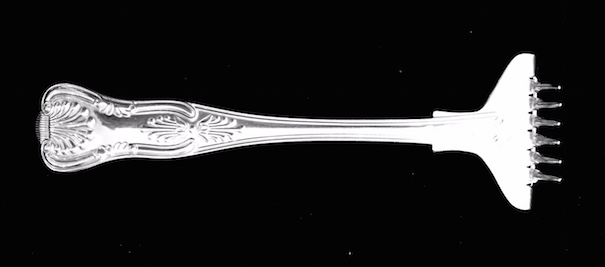
Sugar scraper
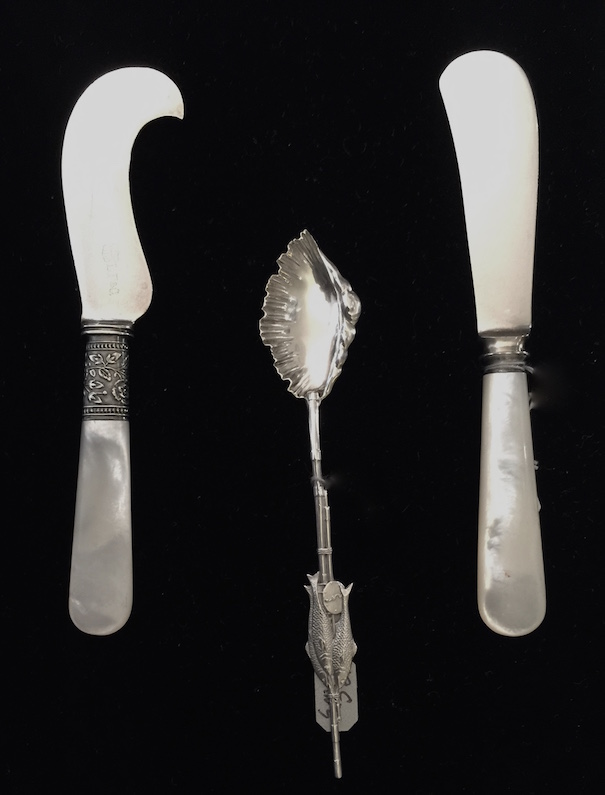
Curved knife for peeling an orange, a shell-shaped caviar spoon that should have been gilded (caviar should never be served on silver, in case you didn’t know), a mother of pearl-handled butter knife
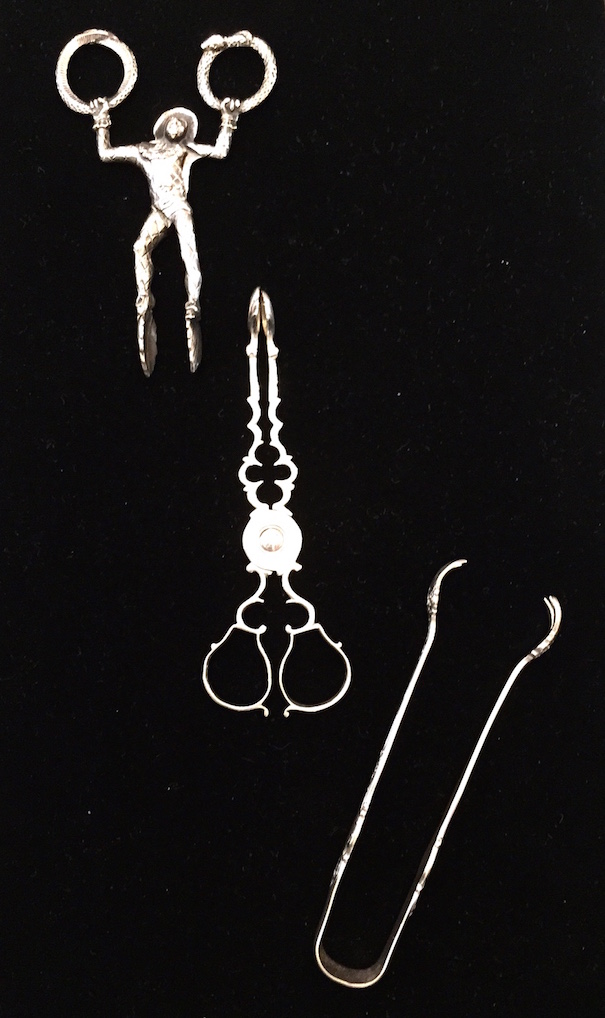
Three kinds of sugar tongs; the middle pair are George II
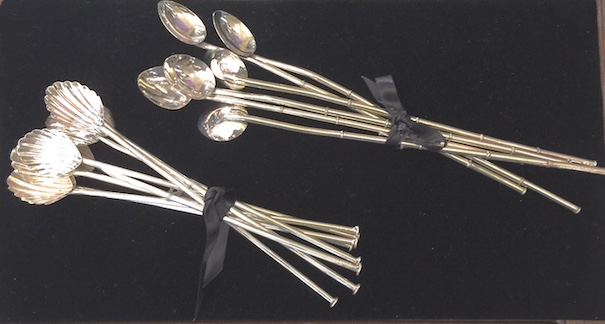
These lemonade spoons are also straws – how clever!
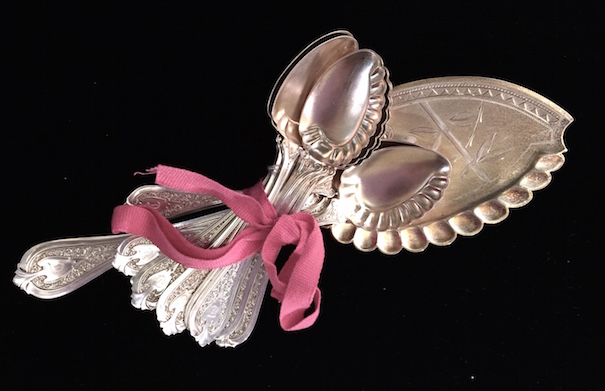
Ice cream spoons and server
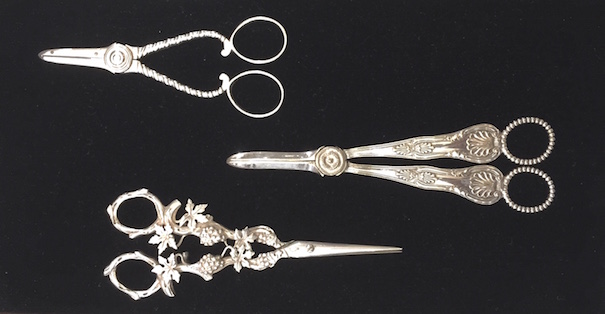
Grape scissors
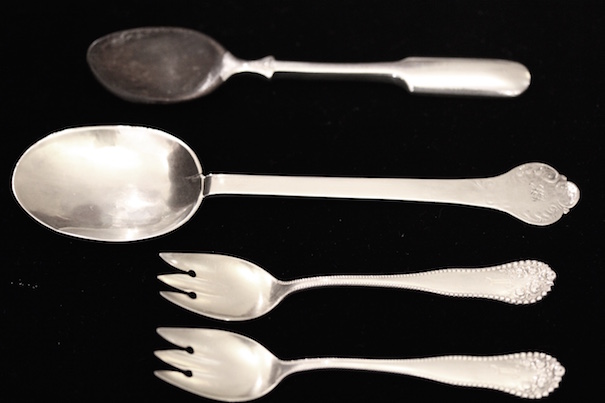
A large wooden-bowled caviar spoon, a 17th-century English spoon, and a pair of ice cream spoons (the forerunner of the spork?)




2 Comments